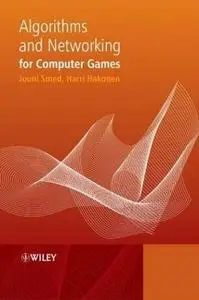Jouni Smed, Harri Hakonen | "Algorithms And Networking For Computer Games"
Wiley | Jul 2006 | ISBN: 0470018127 | English | 288 pages | PDF | Size (for download): 1.3 MB
Challenge and conflict aspects are enough for defining a game in an abstract sense. However, in order to be played, the game needs to be concretized into a representation. This representation can be a cardboard and plastic pieces as well as three-dimensional graphics rendered on a computer screen. The players themselves can be the representation, such as in the children’s game of tag. Regardless of the representation, there must exist a clear correspondence to the rules of the game.
Apart from these formal features, the game play also includes subjective elements such as immersion in the game world, a sense of purpose, and a sense of achievement from mastering the game. One could argue that the sense of purpose is essential for the immersion. What immerses us in a game (as well as in a book or a film) is the sense that there is a purpose or motive behind the surface. In a similar fashion, the sense of achievement is essential for the sense of purpose (i.e. the purpose of a game is to achieve goals, points, money, recognition etc.).
From a human point of view, we get satisfaction in the process of nearing a challenging goal and finally achieving it. These aspects, however, are outside the scope of our current discussion, and we turn our focus to a subset of games, namely, computer games.
TABLE OF CONTENT:
Chapter 01 - Introduction
Chapter 02 - Random Numbers
Chapter 03 - Tournaments
Chapter 04 - Game Trees
Chapter 05 - Path Finding
Chapter 06 - Decision-making
Chapter 07 - Modelling Uncertainty
Chapter 08 - Communication Layers
Chapter 09 - Compensating Resource Limitations
Chapter 10 - Cheating Prevention
Appendix A - Pseudo-code Conventions



